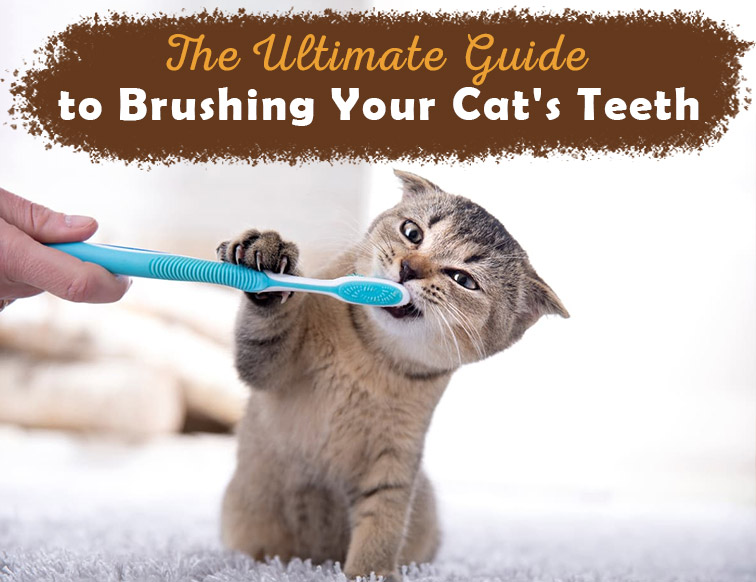The Ultimate Guide to Brushing Your Cat’s Teeth

Does your cat’s breath remind you of stale garlic? Also, you don’t wish to risk your fingers or lose them? Jokes apart, caring for your pet’s teeth and gums can help you get rid of periodontal disease and other health issues apart from foul breath.
Just as humans need to brush their teeth daily, or even twice a day, why not introduce the habit of tooth brushing to our beloved feline companions? It will not just keep their teeth clean and healthy but also prevent plaque, tartar formation, and other dental diseases. However, brushing your cat’s teeth must be done with patience and appropriate care.
When is the right time to begin?
While it’s never too late to begin, starting tooth brushing at your cat’s young age is ideal. Getting them accustomed to the procedure will make the training easy for you. Also, fixing your cat into a routine at a young age elevates the chances of positively adapting to the process.
If your cat is an adult, it is wise to let her go through a dental test to avoid any false experiences and check if there is any pre-existing disease beforehand.
What you need?
Using regular toothbrushes, toothpaste, or dental products made for humans on felines is a disaster. The chemicals used in our oral health products include fluoride, xylitol, and other ingredients, which can be dangerous for cats.
Therefore, find toothpaste that is particularly formulated for cats/kittens, an easy-to-use perfect brush size that fits her small mouth, or you may go with a cat dental hygiene kit.
How to brush?
- Start by gently rubbing your feline’s cheeks, around her face, and try to build up trust. Introduce her to the oral hygiene supplies and give her a couple of days to familiarize herself with the products.
- While your cat examines everything, take a small amount of cat toothpaste over your index finger and let her taste it by licking it. This helps them to palate the flavour and later adapts it.
- Now is the time to gently hold your cat in your lap, lift her lips and then securely start brushing one or two cheek teeth. Brush along the gum line to teeth in a straight back-and-forth motion.
- Following the action, brush your cat’s canine/fang teeth, but remember to stop before your cat gets fussy about it.
- Once the cat has accepted the procedure, raise the number of teeth you are brushing (this may take a few days). Gradually polish the upper molars in the same manner.
- Lastly, make sure that you applaud and reward your cat by giving treats or toys. It will let them know that brushing is a good manner.
Now, understand that this entire procedure may take time and patience, but slowly and steadily, they get comfortable with this training.
Alternatives to brushing your cat’s teeth
Sometimes, no matter how much you try, some cats make brushing difficult. In such a situation, you can still go with these alternatives to avoid dental problems in your cat.
- Giving your cat dry food meals will help in decreasing tartar and plaque formation. However, it is better to consult a vet before deciding on the right diet for your little fur-ball.
- There are various palatable dental chews available that you can buy or order. Again, seek advice for the most effective chews from your vet.
- Try putting toothpaste on dry food or dental chews if your cat enjoys it so that the toothpaste can brush against their teeth.
- There are mouthwashes and gels available that work and contain antibacterial properties. However, prolonged usage can affect the tooth enamel, use only as directed by vet.
Conclusion
Establish a schedule for brushing your cat’s teeth and follow it. Your cat will benefit from having a clean mouth, improved oral health, and overall wellbeing.
